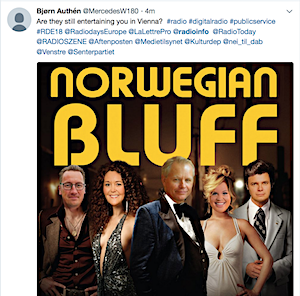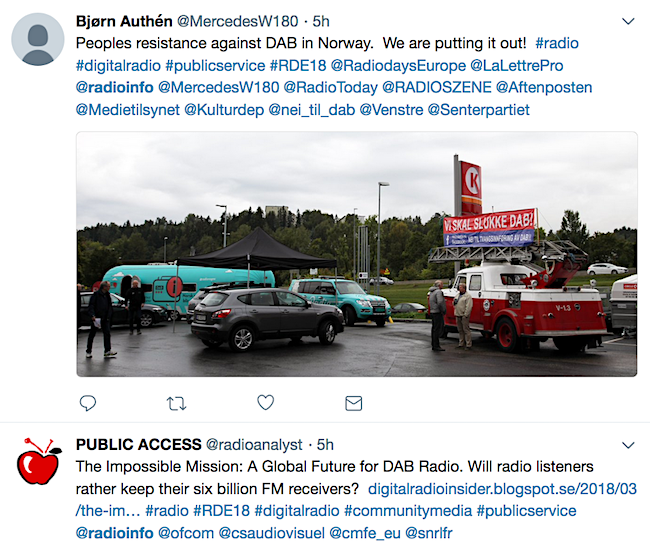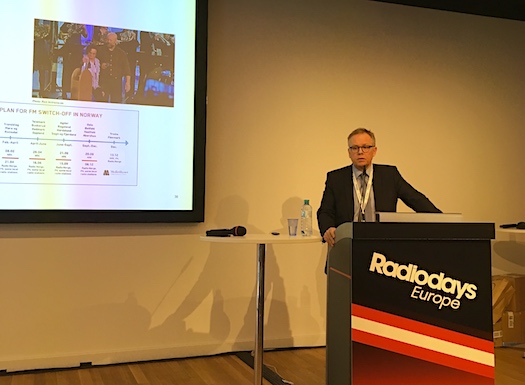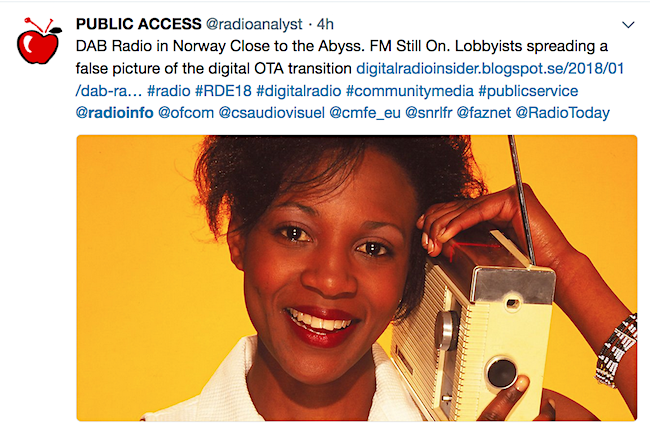Norway is the only country in the world to have implemented a fully digitised national Digital Audio Broadcasting system and to shut down national broadcasts of its FM network.
In Norway the year 2011 was the game changer, with the the political approach recommended to the nation was to promote digital radio. See some of our previous reporting on that decision here and here.
The switchover operation was a mammoth task incorporating a multitude of stakeholders who ultimately were the decision makers in what has become a ground breaking pivot point for others to follow.
The lessons learned have become a roadmap for other countries considering digital radio switchover, and were discussed in a special Focus Workshop today at RadioDays Vienna.
Norway's radio industry used social media to allow the listeners their say on what they really wanted from their radio stations, according to the team presenting the Digital Radio workshop.
Chat websites, DAB help teams and the industry rallied to try and discover what it was they needed achieve with a new digital medium, based on listener feedback during the planing phase.
“Careful planning and teamwork were essential for its success. After much consultation, the listeners were offered more choices than previously,” explained the presenters.
“The transition allowed for better sound quality, more channels and functions at an eighth of the cost of FM radio… but the difficult task of changing the mindset of loyal listeners was slow and cumbersome.”
The habits of listeners seeking new music discovered on DAB was rewarding, but which station should they listen to? Listeners now had a greater choice than ever, for example Bauer Media has 25 new stations on air. “Instantaneously, it was like trying to learn to drive on the other side of the road.”
DAB in cars was especially demanding with car manufacturers having to work with media as the changeover was imminent. Newer vehicles had to be equipped with DAB to make their radios work for all concerned. The conversion actually assisted the listeners to accept the change with a 54% swing in favour of the new technology according to consumer surveys.
The changes have seen older people, those who are hearing impaired and the younger generation benefit greatly.
Not everyone, however, is convinced of the success of digital radio in Norway. While the presenters at the Special Focus Workshop were upbeat about the success so far but also were also discussed some things that did not go as well as expected, there was a voice of dissent targeting the conference through social media.
Even as the workshop presenters were speaking, switchoff skeptics were tweeting at the conference hashtag #RDE18 with messages such as “DAB Radio in Norway Close to the Abyss. FM Still On. Lobbyists spreading a false picture of the digital OTA transition.”





